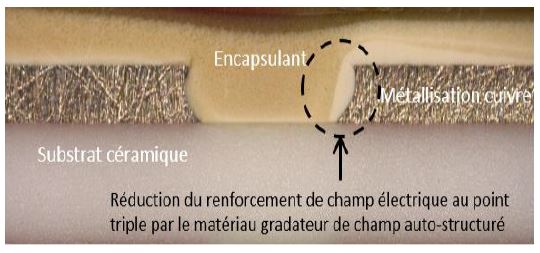Sustainable & digital engineering
Advanced materials
SOLANT: materials for partial discharge insulation

Content created on
Recent developments in power components have focused mainly on increasing their voltage withstand. This requirement has repercussions on the power module's encapsulation insulators through the appearance of partial discharges, accelerating their ageing. This degradation factor, with its complex mechanism, is still poorly understood by industrial players.
Competitive advantages
- Fully controllable functionalisation according to the geography of the electric field reinforcements
- In-situ process during manufacture of the power module
- Known and commonly used materials
- Easy supply
- Reduced costs
Applications
- Electrical protection (encapsulation, passivation, impregnation, moulding, etc.) in the field of electronics and high voltage
- Electrical module (IGBT > 1.2kV)
- PCB
- Board/Component/Connector/Electrical cable
Intellectual property
- Patent
Development stage
Experimental proof of concept
Laboratories

LAPLACE
Description
This technology makes it possible to push back the voltage threshold for partial discharges. Improved module reliability is therefore achieved through:
- The use of a composite insulating material, with a polymer matrix and high permittivity micro-particulate charges, known as a voltage dimmer
- Treatment of this composite with an electric field
- Functionalisation of the composite makes it possible to inhibit electric field reinforcement within the power module
- Potential gradation makes it possible to concentrate the charges on a precise zone; the useful volume of charges is therefore much smaller

Technical specifications
- Matrix type: Curable liquid polymer
- High permittivity fillers: SrTiO3, BaTiO3, etc.
- Functionalisation process: By electric field (DC or AC)
- Permittivity gain: Between 2 and 5 compared with a volume-filled polymer
- Gain in breakdown voltage: Approx. 30% (Epoxy/SrTiO3, AC 50Hz tests, thickness = 1mm)



